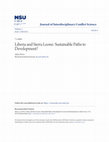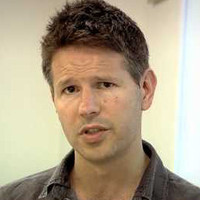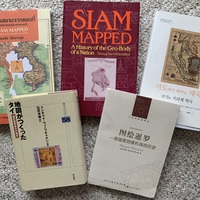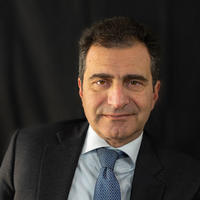Articles (Peer-Reviewed) by Adam Howe

Asian Journal of Comparative Politics, 2021
This article explores the dynamic relationship between states, authoritarian regimes, and organiz... more This article explores the dynamic relationship between states, authoritarian regimes, and organized religion in the ostensibly Marxist-Leninist states of Cambodia, Laos, and Vietnam. Despite espousing an initial shared ideological commitment toward curbing the influence of domestic religion, actual regime policies toward these groups have varied considerably over time. I argue that the explanation for this difference can be found in unpacking the strength of each regime's state apparatus. This article introduces a new typological theory for understanding how state capacity has shaped the divergent strategies Cambodian, Lao and Vietnamese regimes have employed to manage organized religion during the post-Vietnam War era (1975 to present). In brief, I argue that regime elites in Vietnam have successfully co-opted organized religion through the state bureaucracy. Conversely, Marxist-inspired regimes in Cambodia and Laos have oscillated between policies of coercive violence and strategic accommodation to dilute the power of domestic religious groups.

Journal of Asian Security and International Affairs, 2018
The contemporary persecution of Burma's Rohingya has rapidly evolved from isolated episodes of co... more The contemporary persecution of Burma's Rohingya has rapidly evolved from isolated episodes of communal violence into a global humanitarian crisis. The following article analyzes the evolution of recent violence in Rakhine state from 2012 to the present. Specifically, I argue that Buddhist nationalist monks, including members of the '969' Movement and Ma Ba Tha, in concert with the Burmese government, have acted as authoritative voices in society, depicting the Rohingya ethno-religious group as an existential threat to the country's majority Buddhist population. As such, hate-filled rhetoric has provided a politically unstable Burmese regime with an ideological justification for human rights abuses committed in Rakhine State. This phenomenon is analyzed through Barry Buzan and Ole Waever's securitization thesis as a means of better understanding the discursive relationship among Buddhist nationalist monks, the Burmese government, and Burmese Buddhists. Ontologically, this article focuses attention on anti-Rohingya discourse and major episodes of violence in western Burma's Rakhine State from 2012 to 2018. As a discursive process, securitization has not merely amplified Islamophobia within Burma, but significantly endangers future generations of Rohingya civilians.

Politics, Groups and Identities, 2018
Following independence in 1948, successive Burmese regimes have fought continuous wars against et... more Following independence in 1948, successive Burmese regimes have fought continuous wars against ethno-religious minorities living on the periphery. The following article analyzes these conflicts through the lens of prospect theory. According to this perspective, regimes are highly sensitive to relative losses and may employ genocidal policies as a means of state-preservation. Our framework applies this theory to three sub-national cases of genocide perpetrated against the Karen, Kachin, and Rohingya ethno-religious groups. Through qualitative case analysis, we unpack multifaceted processes of violence perpetrated against civilians and non-combatants in Burma. Based on our findings, we argue that the Tatmadaw (Burmese military) engaged in genocidal policies, including forced displacement and labor, slash-and-burn tactics, ethno-religious co-optation, and political killings as an instrumental means of preserving the state. Notably, while the military engaged in extreme violence against all three groups, their interest in state preservation varied. Genocidal violence employed against Karen and Kachin, long recognized by the military as “legitimate” groups, was perpetrated to assimilate “hill tribes” into the state. Conversely, violence against the Rohingya evolved with the goal of pushing a perceived “foreign” group out. This study contributes to the growing body of literature within Genocide Studies, linking macro-level theory to sub-national case studies.

Over a decade removed from devastating civil wars in Liberia (2003) and Sierra Leone (2002), both... more Over a decade removed from devastating civil wars in Liberia (2003) and Sierra Leone (2002), both
states have unsurprisingly placed a strong emphasis on post-conflict economic development. Despite
a streak of impressive GDP growth in both states, a host of underlying structural deficiencies are
readily apparent. Long-term natural resource reliance subjects both economies to the boom and bust
cycle of global commodity markets while simultaneously encouraging rent-seeking behavior. More
specifically, Liberia’s growing iron ore sector and Sierra Leone’s diamond exports have generated
pockets of wealth, though the profits have not trickled down to the public at-large. The purpose of
this paper is two-fold. I first explore how two very similar countries have approached post-conflict
development. Secondly, I analyze the opportunities and obstacles to sustainable economic development
in both states. The preliminary evidence presented in this paper suggests that Liberia’s pursuit
of good governance policies through the Governance and Economic Management Assistance Program
(GEMAP) places it in a relatively better position to attract both foreign direct investment and
bilateral aid in the coming years. Conversely, Sierra Leone’s unwillingness to seriously combat institutional
corruption will likely serve as an impediment to stable economic development. While development
in both states could very well be mitigated by a host of exogenous factors (environmental catastrophe,
conflict-spillover, disease), this paper advances the argument that good governance and economic
diversification must remain top priorities.
OP-ED by Adam Howe











Uploads
Articles (Peer-Reviewed) by Adam Howe
states have unsurprisingly placed a strong emphasis on post-conflict economic development. Despite
a streak of impressive GDP growth in both states, a host of underlying structural deficiencies are
readily apparent. Long-term natural resource reliance subjects both economies to the boom and bust
cycle of global commodity markets while simultaneously encouraging rent-seeking behavior. More
specifically, Liberia’s growing iron ore sector and Sierra Leone’s diamond exports have generated
pockets of wealth, though the profits have not trickled down to the public at-large. The purpose of
this paper is two-fold. I first explore how two very similar countries have approached post-conflict
development. Secondly, I analyze the opportunities and obstacles to sustainable economic development
in both states. The preliminary evidence presented in this paper suggests that Liberia’s pursuit
of good governance policies through the Governance and Economic Management Assistance Program
(GEMAP) places it in a relatively better position to attract both foreign direct investment and
bilateral aid in the coming years. Conversely, Sierra Leone’s unwillingness to seriously combat institutional
corruption will likely serve as an impediment to stable economic development. While development
in both states could very well be mitigated by a host of exogenous factors (environmental catastrophe,
conflict-spillover, disease), this paper advances the argument that good governance and economic
diversification must remain top priorities.
OP-ED by Adam Howe
states have unsurprisingly placed a strong emphasis on post-conflict economic development. Despite
a streak of impressive GDP growth in both states, a host of underlying structural deficiencies are
readily apparent. Long-term natural resource reliance subjects both economies to the boom and bust
cycle of global commodity markets while simultaneously encouraging rent-seeking behavior. More
specifically, Liberia’s growing iron ore sector and Sierra Leone’s diamond exports have generated
pockets of wealth, though the profits have not trickled down to the public at-large. The purpose of
this paper is two-fold. I first explore how two very similar countries have approached post-conflict
development. Secondly, I analyze the opportunities and obstacles to sustainable economic development
in both states. The preliminary evidence presented in this paper suggests that Liberia’s pursuit
of good governance policies through the Governance and Economic Management Assistance Program
(GEMAP) places it in a relatively better position to attract both foreign direct investment and
bilateral aid in the coming years. Conversely, Sierra Leone’s unwillingness to seriously combat institutional
corruption will likely serve as an impediment to stable economic development. While development
in both states could very well be mitigated by a host of exogenous factors (environmental catastrophe,
conflict-spillover, disease), this paper advances the argument that good governance and economic
diversification must remain top priorities.